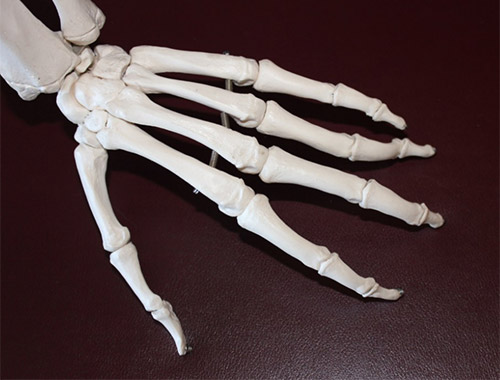A technique for evaluating fracture risk in osteoporotic patients based on 3D reconstruction of both shape and Bone Mineral Density from a single radiographic image.
BACKGROUND
Osteoporosis, which is characterized by low bone mass and microarchitectural deterioration, is a major risk factor for fractures of the hip, vertebrae, and distal forearm. Because occlusion between adjacent bones prevents the use of radiographic techniques to determine the internal structure of bones, an advanced imaging diagnostic test, such as CT scan, is required in order to obtain a representation of the internal structure of the bones. However, these techniques involve a high dose of radiation for the patient as well as high financial costs for hospitals and insurances. This prevents patients from being managed to minimize the risk of osteoporosis-related fracture.
THE TECHNOLOGY
This technology generates a 3D model of one or more bones in close contact with each other, e.g., the femur-hip joint, or the adjacent vertebrae and their internal structures. The technology requires a single radiographic DXA 2D image (a modality routinely used in clinics for osteoporosis diagnosis) in order to reconstruct the corresponding 3D bone model, thus reducing the need for more expensive and harmful imaging tests. If increased accuracy of the model is required, more than one 2D radiographic image can be used.
ADVANTAGES
- 3D reconstruction of the bony shape and bone mineral density obtained from a single DXA image.
- Only standard DXA and computer equipment required.
- 3D Quantification of the femur strength and individual fracture risk
STATE OF DEVELOPMENT
The technology can be implemented into software. Results have been validated in clinical routine use.
INTELLECTUAL PROPERTY
A patent covering the technology has been filed in Spain and a European Patent application is pending. The ownership is shared with CETIR Grup Medic.
MARKET OPPORTUNITY
54% of postmenopausal white women in northern parts of the USA are estimated to have osteopenia and a further 30% to have osteoporosis in at least one skeletal site. Fracture of the femur affects 18% of women older than 50 years. 11000 DXA devices are installed worldwide (300 in Spain) and bone densitometry generated in 2010 revenues of 164 million Euros worldwide.
CONTACT
Technology Transfer Unit
(+34) 93 542 2187
[email protected]
KEYWORDS
Osteoporosis, fracture risk, medical imaging, BMD (Bone Mineral Density).
Ref: TEC-0016/P-0013
Fact sheet

